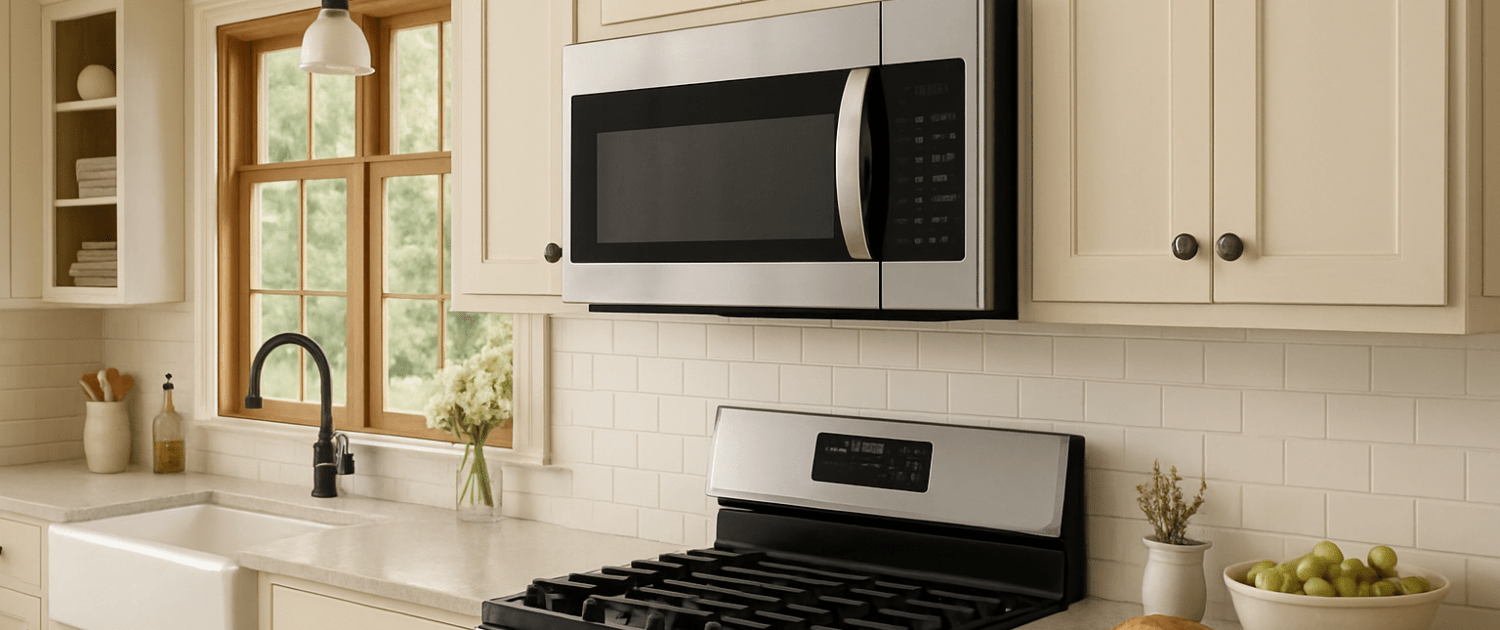How to Replace LG Microwave Choke Cover 3552W1A032J
Steven E / Friday May 16, 2025
Has your trusty LG microwave been acting up due to a damaged door seal or an off-kilter appearance? The culprit might be a worn-out choke cover, but don’t worry—you’re just a few steps away from a quick and easy DIY fix. Dive into our comprehensive guide and accompanying video below to see how you can replace this crucial component and get your microwave back to optimal performance!
Looking for the right part? Enter your appliance model number below to find the exact match and get your appliance running like new again!
If the inside of your LG microwave door looks damaged or the seal feels off, chances are the choke cover, part number 3552W1A032J, needs replacing. This plastic frame helps block microwave energy from leaking and keeps the door sealed tight. The good news? It’s not hard to replace, and you don’t need to be a technician to do it. Grab a few tools and we’ll walk you through the process step-by-step.
Watch: How to Replace the Microwave Choke Cover
The information in this article may not apply to your specific appliance model. We recommend consulting your manufacturer’s documentation or contact us with any questions.
What Is a Microwave Choke Cover?
First things first, what exactly is a microwave choke cover? This is a crucial component you’ll find installed along the inside frame of the microwave door.
The cover wraps around the window preventing microwaves from leaking out through small gaps in the door. The waved metal pattern you see on some covers helps block this electromagnetic energy.
Over time, normal wear and tear can cause the thin metal cover to bend or break. If damaged, small amounts of radiation can seep out, impacting the microwave’s performance. Replacing the old cover restores safety and efficiency.
Safety precautions
Safety should always be a priority when working on any appliance. Here are a few practical tips to help you stay safe:
- Turn off the power to the appliance by unplugging it or switching off the circuit breaker before starting any maintenance or repairs. This protects you from the risk of electric shock.
- Wear insulated gloves to shield your hands from sharp edges, pinching hazards, or debris.
- Work at a steady pace and take your time to avoid accidents or injuries.
- Make sure your workspace is well-lit so you can clearly see and access the parts you’re working on.
- Keep the area clear of clutter, and ensure children and pets stay out of the workspace.
- Never handle internal parts with wet hands. Check that both your hands and the work area are completely dry.
- Refer to your appliance’s user manual for any specific instructions or safety guidelines related to the part or repair.
- Handle parts gently to avoid damage to the appliance or potential injuries from applying too much force.
- Use safety glasses when dealing with chemicals, dust, or large debris to protect your eyes from harm.
- If the appliance was recently used, give it enough time to cool down before working on any heated components.
- Take photos or notes of wiring connections and terminals before disconnecting anything to make reassembly easier.
- Avoid touching exposed wires or terminals. If you must handle wires, use non-conductive tools or wear insulated gloves to minimize the risk of electrical shock.
Microwave Choke Cover Replacement
Remove the Old Cover
With your tools gathered, it’s time to take off the existing choke cover:
- Locate the plastic locking tabs – The cover snaps securely into place using small plastic tabs protruding through holes along the door frame.
- Insert a putty knife – To remove the tab from the hole, gently slide a putty knife underneath it, being careful not to apply too much force that might cause the brittle tab to break.
- Use a second putty knife to brace – As you release each subsequent tab, position another putty knife inside the door panel behind the cover. This braces it so the freed tabs don’t snap back into place.
- Work around the entire cover – Slowly make your way around the entire perimeter of the cover, releasing tab after tab. There may also be a central locking tab to detach.
- Remove the old cover – To free each tab, carefully and gently pull the cover away from the door. Make sure to set aside this choke cover, as it will not be needed for reuse. Take your time and make sure that all tabs are released before proceeding.
Install the Replacement
Here’s how quick and easy it is to mount the new replacement choke cover:
- Position the new cover – Orient the replacement cover by aligning it correctly with the door. Make sure the tabs on the cover are in perfect alignment with the corresponding holes on the door frame for a secure fit.
- Press tabs into place – To get a secure fit, carefully start at one end and apply gentle but firm pressure to each plastic tab. Push them into the corresponding holes until you hear a satisfying click, indicating a successful lock. Continue this process as you make your way around the entire cover, guaranteeing a snug and reliable closure.
- Inspect the installation -Carefully double-check that all the tabs are fully inserted into their designated slots. Once confirmed, make sure that the cover sits perfectly flat, leaving no room for misalignment or protrusions. As the final step, firmly close the door and verify that it shuts seamlessly without any noticeable gaps in its closure.
That’s all there is to it! In no time at all you’ve breathed new life into your microwave with a fresh choke cover.
Test and Use Your Microwave
With the new part installed, the last step is confirming your appliance works correctly:
- Plug microwave back in – Restore power to the outlet and press the open/close button to check the door functions normally.
- Test heating – Microwave a cup of water and verify it heats up properly without issues.
- Enjoy your revived microwave – You did it! Your DIY skills just saved your repair costs and downtime without the microwave.
Where To Find Us
If you need any replacement parts for your appliances, you can enter your model number at AppliancePartsPros.com to locate and order them quickly. Most orders arrive in just two business days, and we have tons of great information in our repair help section and YouTube videos to help you troubleshoot.
Stay connected with the latest DIY tips, tutorial videos, and repair guides by following us on Facebook, Instagram, and Twitter. We love hearing about your repair stories and successes. If you need more help or want personalized guidance, feel free to reach out. We’re ready to help you take on your next project with confidence!
With nearly a decade of experience in providing top-notch customer service regarding appliance parts and repair, Steven enjoys sharing practical advice, troubleshooting tips, and interesting information to help readers stay informed.




